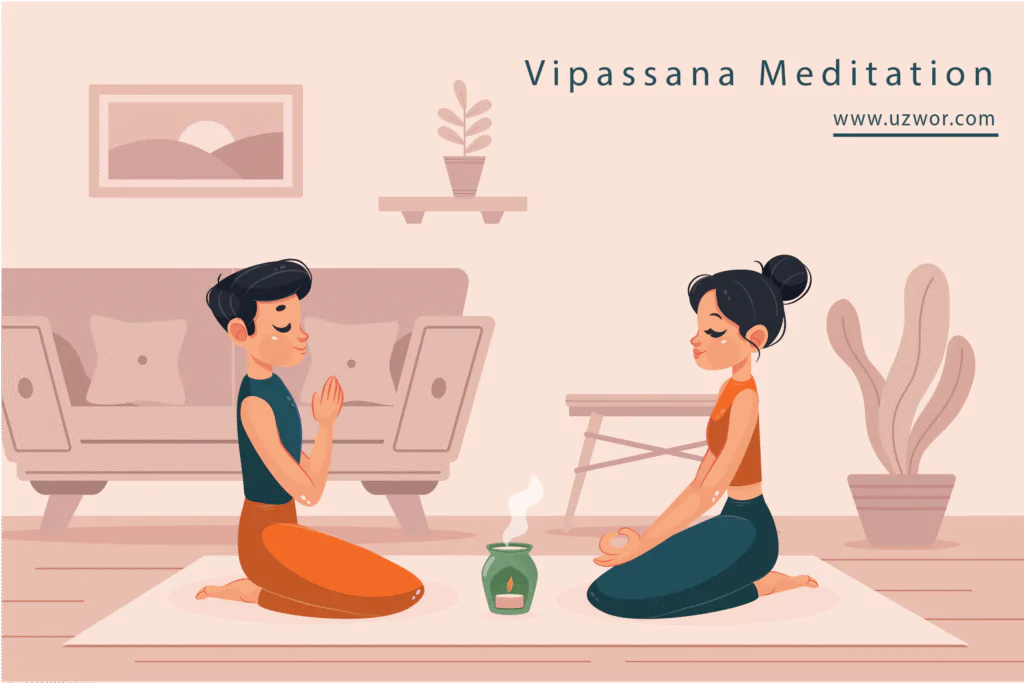Imagine you are driving a car from Point A to Point B. You get into the car, and suddenly it starts raining. You can’t see clearly because the car wipers aren’t working. As you aren’t able to see the view clearly, you can’t drive. Even if the wipers start working, you aren’t able to view the other vehicles clearly, so you still can’t drive the car. As you aren’t able to see either the details or a clear way. 2 Buddhism meditation types enable you to clear and detailed view. Both of the meditation types are interconnected, as without a clear view, you can’t drive. Or without a detailed view, you could have an accident. Read the article to discover the 2 main Buddhist meditation types.
Samatha Meditation (Calmness)
Samatha meditation allows you to rest your mind, calm your feelings, and provide peace to your mind. When you perform Samatha meditation, you make it habitual not to worry about things because worrying about them only will cost you peace of mind.

Budh said, “When your mind becomes peaceful, serene serene and calm, then it will help to see the reality”.
Which means that, when you perform the Samath meditation, you wear glasses that help you to see things as they are! This reality of the world helps us to stay calm and peaceful in tough situations, and react to the situation based on the reality. not driven by emotions. Samatha is a tool to help you realise the reality and act accordingly.
Why do you need to practice Samatha Meditation?
Samatha meditation allows you to open the door to calmness, peacefulness, and clarity of real life. Below are the to-the-point benefits of Samatha meditation:
- your mind becomes clear
- You have more control over emotions
- You can see the reality
- You become stress-free
Vipassana Meditation (Insight)
The word Vipassana means to see through, so that’s why Buddhists call Vipassana meditation insight meditation. This meditation type helps you to view the situation or problem in detail. Like in the above Car example, the absence of the detail view could lead to an accident. These meditation types will help you gain deeper insight into your life.

For example, a meditation is to run your thoughts freely about yourself, without any judgments. Once the thoughts become slow. Then start connecting the thoughts to form the insight and a connected view of your life.
Why should you do Vipassana meditation?
Vipassana meditation allows you to have an insightful view of your life
- Where is your life going?
- How are you doing in your life?
- What can you do in your life?
How are both meditations connected?
Samatha and Vipassana aren’t two separate journeys. They are two wheels of the same car.
Just like the car example—if your view is blurred, you can’t drive. And if you don’t have detailed awareness of the road, you might crash. That’s exactly how these two meditations work together. Samatha gives you a calm and clear mind—like cleaning the windshield. Vipassana gives you detailed insight—like seeing every turn, every bump, and every signboard on the road of life.
You can’t do Vipassana properly without a calm mind. And you can’t reach deeper calmness if you don’t start understanding your thoughts and life clearly. That’s why many monks begin with Samatha and gradually shift into Vipassana. It’s not about choosing one—it’s about building a bridge between calmness and clarity.
Once you understand this connection, your meditation doesn’t remain just a practice—it becomes a way to drive your life with awareness, peace, and purpose.
So next time you sit for meditation, remember—you’re not just closing your eyes. You’re learning how to drive. Calmly. Consciously. Clearly.

